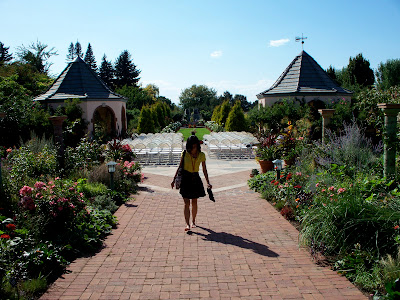The image above if the first known photograph in the world, taken by Nicephore Niepce in 1825. Photography has a long and complicated history full of major contributions from a number of people. Here are a few key terms and people who shaped the early history of photography.
Camera Obscura: Camera Obscura translates as "dark room" and this is basically an invention which uses a box with a hole in one side to create a projection of an image. This was one of the earlier inventions which led to the creation of photography.
Johann Heinrich Schultz (silver salts): Johann Heinrich Schultz (1687-1744) was a German professor who discovered that when certain silver salts come into contact with light they darken. Even though the silver salts continue to darken unless protected from the light this discovery laid the groundwork for the creation of fixed images.
Thomas Wedgewood (sun prints): Thomas Wedgewood (1771-1805) created what are known as "sun prints" in the 1790's. He experimented with shining light on objects soaked with silver nitrate in order to change their chemicals and create outlines of the object. However, he was unable to fix the images so they would ultimately deteriorate.
Nicephore Niepce: Nicephore Niepce (1765-1833) was a French inventor who is most widely known for creating the first photograph in 1825. He developed the first photographic process known as "heliography," which made him an early pioneer of photography.
Louis-Jacques-Mande Daguerre: Louis-Jacques-Mande Daguerre (1787-1851) is most widely known for his creation of the daguerrotype process, which he patented in 1839. This process is created with mercury and silver on a copper plate. His process came after working with Niepce for a number of years and the French government actually released it to the public stating that it was a gift "Free to the world."
William Henry Fox Talbot: William Henry Fox Talbot (1800-1877) was a British inventor who is attributed with the invention of the calotype process, which he was able to patent in 1841. This is the process which modern photographic processes stem from. He is also known for helping shift photography into an artistic medium.
Hill and Adamson: David Octavius Hill (1802-1870) and Robert Adamson (1821-1848) were a Scottish painter and photographer duo that put Talbot's photographic process to creative work in the 1840's. They are best known for their portraiture photography, most notably their photographs of working men an women in the fishing village of Newhaven, but they also did a lot of architecture and landscape photography.
Julia Margaret Cameron: Julia Margaret Cameron (1815-1879) was a British photographer most well known for her photographs of celebrities of the time, such as Charles Darwin. Her work was not widely appreciated in her time but has become an inspiration for later generations of photographers.
Felix Nadar (Gaspard-Felix Tournachon): Felix Nadar (1820-1910) was a French photographer who is known for taking the first aerial photographs with a camera. While working in the catacombs of Paris he also pioneered the use of artificial lighting in photography.
Scott Archer (wet collodion): Frederick Scott Archer (1813-1857) is most well known for his creation of the photographic collodion process. This has a major advantage over the daguerrotype as one can create multiple prints from the plate negative. He died in poverty due to the fact that he never patented his process.
Dr. Richard Maddox: Dr. Richard Maddox (1816-1902) was an English photographer who invented lightweight gelatin negative plates in 1871. He was also well known for his photomicrography, which involves using a microscope with a camera to photograph small organisms.
George Eastman (Kodak roll film): George Eastman (1854-1932) was an American inventor who invented roll film, which helped make photography a much more mainstream practice.






















































